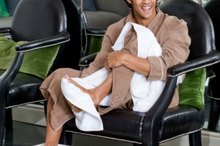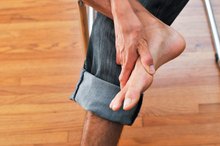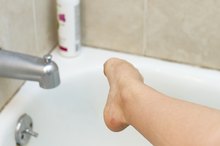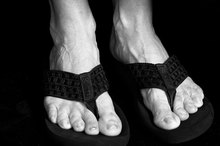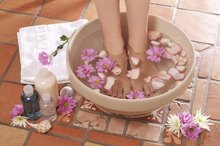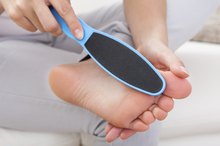What does fact checked mean?
At Healthfully, we strive to deliver objective content that is accurate and up-to-date. Our team periodically reviews articles in order to ensure content quality. The sources cited below consist of evidence from peer-reviewed journals, prominent medical organizations, academic associations, and government data.
The information contained on this site is for informational purposes only, and should not be used as a substitute for the advice of a professional health care provider. Please check with the appropriate physician regarding health questions and concerns. Although we strive to deliver accurate and up-to-date information, no guarantee to that effect is made.
How to Remove Foot Corns Naturally
Corns, also known as calluses, are thickened patches of skin that develop as a result of constant pressure 2. When you develop a corn, it's your skin's way of protecting itself from blisters and other open sores. Corns can be unsightly and look thick and scaly 3. Removing foot corns involves relieving the pressure from your foot and then carefully sloughing away the dead skin cells on your foot to reveal healthier, smoother skin.
Soak your feet in warm water for 10 to 20 minutes. This will help soften the skin in preparation to exfoliating. After 20 minutes, remove your feet and pat dry. Use a pumice stone to gently scrub at the corn, suggests the Mayo Clinic. Never rub so hard that it causes you pain or opens sores on your skin. Once you've sloughed away some of the dead skin, rinse your foot. You can use a pumice stone several nights in a row to achieve the best results.
How to Remove Soft Corns Between My Toes
Learn More
Apply a thick layer of moisturizing cream over your entire foot, focusing on the corn. When it's been covered, slide your foot into a sock or cover with plastic wrap. This insulates the foot to warm the moisturizer for better penetration. Leave the covering on all night.
Apply a donut-shaped bandage to protect the corn throughout your day. Any added friction can cause the corn to begin formation again, so it's important to stop all friction from occurring, according to MedlinePlus. Replace the donut bandage as needed, removing it each night to repeat your soaking, exfoliating and moisturizing regime before bed.
How to Remove Corns Permanently
Learn More
Switch to shoes that have plenty of toe room and heel support, suggests the American Orthopaedic Foot and Ankle Society 3. Ensure that your shoes don't cause any sort of excessive rubbing. This will not only help your corns heal, but comfortable, well supported shoes will also stop future corns from developing.
Schedule an appointment with your doctor if home remedies don't seem to remove your foot corns. Your corn may be so thick and well-developed that it requires surgical removal. Your doctor can also suggest ways to reduce friction for less corn formation. Never use a razor blade or other device to shave away the corn on your own. You could leave yourself susceptible to infection and scarring as a result of your own procedures, according to ePodiatry.com 4.
Related Articles
References
- MayoClinic.com: Corns and Calluses
- Medline Plus: Corns and Calluses
- American Orthopaedic Foot and Ankle Society: Corns
- ePodiatry.com: Foot Corn and Callus
- DeLauro T and DeLauro M (2012) Chapter 98: Corns and Calluses. Fitzpatrick's Dermatology in General Medicine (8th Edition). New York, New York: McGraw-Hill Education. ISBN-13: 978-0071669047.
- American Academy of Dermatology Association. How to treat corns and calluses. 2019.
- Reddy P, Anusha T, Haritha N, Nagendra A, Bhavani D, Gandhimathi R. Case report on non-surgical treatment for foot corn. International Journal of Dermatopathology and Surgery. 2018;4(1).
- American Academy of Dermatology Association. How to Treat Corns and Calluses. 2019.
- DeLauro T and DeLauro M (2012) Chapter 98: Corns and Calluses. Fitzpatrick's Dermatology in General Medicine (8th Edition). New York, New York: McGraw-Hill Education. ISBN-13: 978-0071669047.
Writer Bio
Kay Ireland specializes in health, fitness and lifestyle topics. She is a support worker in the neonatal intensive care and antepartum units of her local hospital and recently became a certified group fitness instructor.
